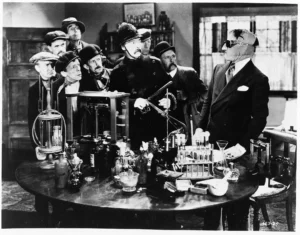Vanishing Acts: Unseen Terrors in The Invisible Man
Vanishing Acts: Unseen Terrors in The Invisible Man

- Goh Cheng Hao
Share this :
(This article may contain minor spoilers)
The idea of an invisible man has long haunted our storytelling imaginations. In fiction, as early as in Plato’s Republic; Doctor Faustus (1592), and subsequently H. G. Wells’s The Invisible Man (1897). In 1933, James Whale adapted Wells’s novel, marking the eponymous character’s foray into the cinematic world.
The Invisible Man continues to stalk contemporary media across genres, in superhero franchises and in alien worlds. But why exactly is invisibility so compelling as a plot device? Visuality is so central to cinema, and yet, isn’t it kind of paradoxical that something we can’t see presents such potent terror?
Incidentally, the first undergraduate class I took was an art history module titled after critic John Berger’s 1972 essay-novel Ways of Seeing. He begins the book: “Seeing comes before words. The child looks and recognizes before it can speak…. It is seeing which establishes our place in the surrounding world…”
Sight is paramount to meaning-making: nine-tenths of our knowledge of the world is mediated through it. Sight is immediate and empirical, lending itself to biology and geography, and animating art, cinema, even the law (through eye-witnesses). Vision permeates much of our lives, we measure, evaluate, and locate things with our eyes. Something unseeable is then nebulous, uncertain, and outside of our understanding – black holes, infinitesimally small quarks, four dimensional objects, and appropriately, an Invisible Man.
On an epistemological level – how we know what we know – invisibility is hence discomforting. Presented with the existence of an Invisible Man, we gain the spine-chilling knowledge that our senses are no longer reliable. If we cannot trust our own eyes to locate him, then our basic understanding of our reality – our ability to navigate our surroundings, to sense danger – is upended, thrust into unfamiliar territory. Films like Bird Box (2018) and A Quiet Place (2018) precisely illustrate this upset of humanity’s relationship with our senses.
Undoubtedly, an Invisible Man terrifies not just on account of his invisibility, for it is what he is able to do with it that matters. It is not invisibility that is inherently monstrous, but human behaviour. Compared to invisible ghosts or spectres, his corporeality allows him to influence the physical world, and invisibility affords him inordinate power, for how could we hold an invisible man accountable, no less catch him? In the real world, we see visible people carry out obscene acts of depravity – one need not imagine the extremes an invisible one could go.
The Invisible Man hence disturbs logic and reality, but also disrespects systems and order, highlighting the fragility of law and of moral systems. He makes us uncomfortably aware of our epistemological and physical vulnerabilities, making him an incredibly effective vehicle of horror.
…
In his 1981 non-fiction Danse Macabre, horror great Stephen King classifies a hierarchy of scares: The Gross Out, Horror, and finally, Terror, “the finest emotion”. Terror, as King describes, is that suspenseful and anticipatory moment before the reveal of the monster.
King cites W. W. Jacobs’s 1902 horror story The Monkey’s Paw, centering an enchanted monkey’s paw that grants three wishes. Each wish, however, comes with a dreadful caveat of a sacrifice, made known after a family’s first wish results in their son’s grisly death. The family wishes him back alive, but apprehensive with its implications and spurred by the unearthly barrage of knocks on their door, the patriarch hurriedly undoes the second wish with the third. King identifies the power of imagination during such a moment:
“[It’s] what the mind sees that makes these stories such quintessential tales of terror…the unpleasant speculation called to mind…Nothing is there but the wind when she finally throws the door open…but what, the mind wonders, might have been there if her husband had been a little slower on the draw with that third wish?”
The premise of invisibility extends that moment of suspense before the ‘Scooby-Doo mask reveal’, prolonging the feeling of Terror, for we – like in The Monkey’s Paw – are never allowed to see what is behind the door. As such, when unexplained things happen, being unable to rationalise them allows our imagination to run amok, conjuring monstrous and yet plausible extremes.
Whale’s The Invisible Man (1933) cleverly illustrates this imaginative terror. Over the radio, a police broadcast reports that scientist Jack Griffin (The Invisible Man) has murdered a policeman: “You’re requested to lock every door and window, and every outbuilding he may use to hide in”. Throughout this, the camera shows an elderly couple in their living room, a huddle of scared children in an orphanage, a panic in the community club, followed by a frantic compilation of bolting and boarding up doors and windows.
The scene is discomforting – the camera’s intrusion into private spaces mirrors the incursion on the home, the violation of security and privacy. But more frightening, is the almost schizophrenic conclusion suggested: if Griffin could be anywhere, then he is everywhere, and yet nowhere to be seen. He gains a virtual omnipresence, existing in every empty corner. We imagine him as the source of every floorboard’s creak, or every shift in atmosphere. Our imagination lends Griffin his fearsomeness, and most unnerving is his awareness that he possesses such incontestable power and access. As if with an invisible nod to the camera – Griffin knowingly declares:
“The whole world’s my hiding place.”
…
In 2018, I attended a minimalism show at the National Gallery, where I was drawn to a particular work by Anish Kapoor. I find myself reminded of it now in relation to the anxiety around invisibility. Kapoor, best known for his exclusive rights to Vantablack – the world’s darkest material – displays its disorienting visual power in the sculpture, Void (1989). It’s an understated yet powerful piece: a concave dome protrudes from the gallery wall, the inside coated in an inconceivably black material.

There’s an art theory reading that relates to this sculpture; 18th-century philosopher Edmund Burke in his 1757 treatise A Philosophical Enquiry into the Origin of Our Ideas of the Sublime and Beautiful outlines qualities that empower the sublime. A slippery term, Burke identifies “…ideas of pain, and danger…whatever is in any sort terrible…or operates in a manner analogous to terror” as a source of the sublime. He also outlines obscurity as one of the sublime’s many tenets: when knowing “the full extent of any danger, when we can accustom our eyes to it, a great deal of the apprehension vanishes”. Logically, the opposite follows. Similarly, darkness as an extension of obscurity, is also terrible.
Confronted directly, Void embodies Burke’s idea of the sublime as adjacent to Terror: being both dark and obscure. It’s this dizzying emptiness, as if someone carved a perfect sphere out of thin air. The coating absorbs all visible light, and the sculpture takes the form of utter darkness, flattened of any depth or texture, and yet there’s an inexplicable gravity about it. Despite our knowledge of its domed shape, we can’t distinguish exactly where its contours are, although we know they should be there. Likewise, the concept of an Invisible Man reflects these notions of obscurity – an invisible figure is frightening for he is impossible to discern, to ever “accustom our eyes to”. Obscurity is scary as it is logically inconsistent: it contradicts what we see and what we know, and we feel like we can no longer trust our own eyes.
Terror then also derives from a collapse in logic. Where there should be something, perhaps even someone, there is instead none. King echoes this: “…It’s when the lights go out and you feel something behind you, you hear it, you feel its breath against your ear, but when you turn around, there’s nothing there…”.
Void and the Invisible Man embody Burke’s conceptions of obscurity and King’s ideas of illogic, their inscrutability lending itself to Terror. Both evoke the fear of the unknown, the possibility of slippages in our senses, resist even our attempts to verbalise our understanding of it – where attempts to translate the visual act into words come short. That kind of irrationality and incomprehension gives us pause, for in our blindness to these obscurities, we are never certain what kind of danger they pose. A dangling question mark.
….
Ostensibly, The Invisible Man runs counter to the other films in this year’s programme. Where its festival peers and horror contemporaries feature dramatic visuals – pyrotechnics and lasers; jumpscares and gore – The Invisible Man resists such visual spectacle. The film privileges neither show nor tell, and yet still raises a compelling argument that there is much to gain in what we cannot see.
Whale’s The Invisible Man, and Leigh Whannell’s 2020 modern reimagining artfully demonstrates this idea in their cinematography. The films’ visible characters are perpetually framed off-centre in their shots, always leaving negative space for their Invisible Men to inhabit. Even when characters leave the frame, the camera lingers far too long on these empty spaces. Our knowledge (or imagining) of The Invisible Man’s logic-defying omnipresence creates incredibly palpable tension in these scenes: is he, or isn’t he there? These scenes, much like in Void, show us that there is terror to behold in negative space, in things unseen, and in emptiness.
Perhaps the most unsettling part of the film is its end, as the screen fades to black and the cinema is plunged into darkness. That moment of blindness before your eyes adjust, the anticipation of the lights coming back on, you think to yourself — did something just brush against the hairs of my neck?
About the Author
Cheng Hao is an English Literature and Art History undergraduate. A chronic fidgeter during movies, he has a perpetually growing watchlist and probably watches more film summaries on YouTube than films themselves. With a penchant for horror and the intersections between film and video art, you can find him on Substack (https://chenghao.substack.com/) if he ever gets around to posting his ramblings.
Footnotes
- Berger, J. (1972) Ways of Seeing. 7.
- King, S. (1981). Danse Macabre. 21.
- Burke, E. (1757). A Philosophical Enquiry into the Origin of Our Ideas of the Sublime and Beautiful, With An Introductory Discourse Concerning Taste, And Several Other Additions. 111.
- Burke, E. (1757). A Philosophical Enquiry into the Origin of Our Ideas of the Sublime and Beautiful, With An Introductory Discourse Concerning Taste, And Several Other Additions. 133.
- King, S. (n.d.). https://www.goodreads.com/quotes/84666-the-3-types-of-terror-the-gross-out-the-sight-of.
Share this :
